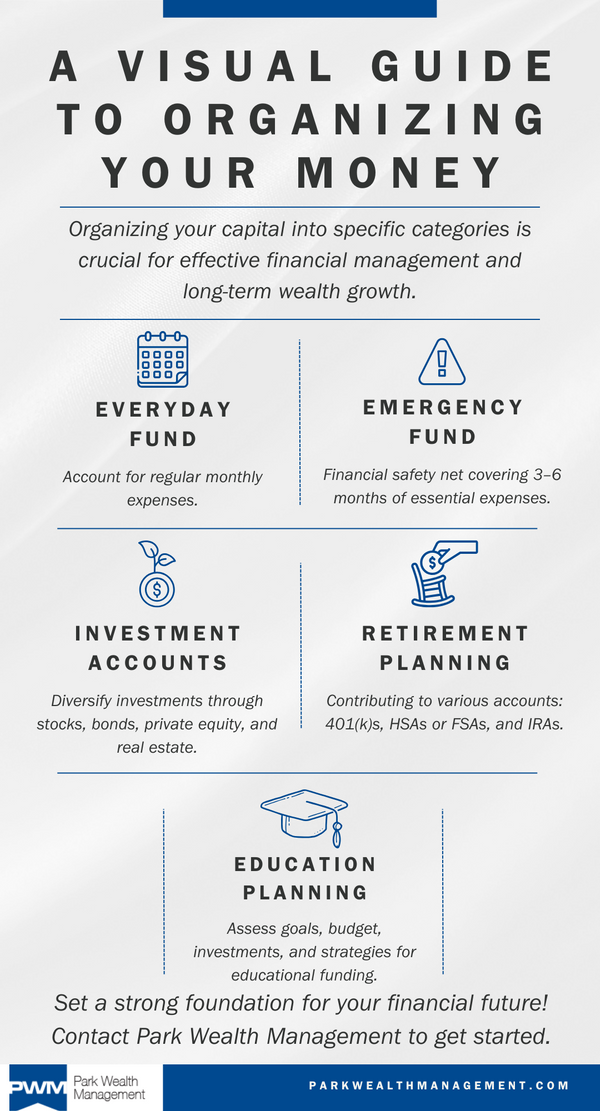When it comes to financial planning, organizing your capital into specific "buckets" can simplify wealth management and enhance your financial security. At Park Wealth Management, our experienced financial planning consultants emphasize the importance of strategic allocation to work towards meeting your goals. Here are four essential bucket categories to consider:
Disclosure: Asset allocation does not ensure a profit or protect against a loss.






